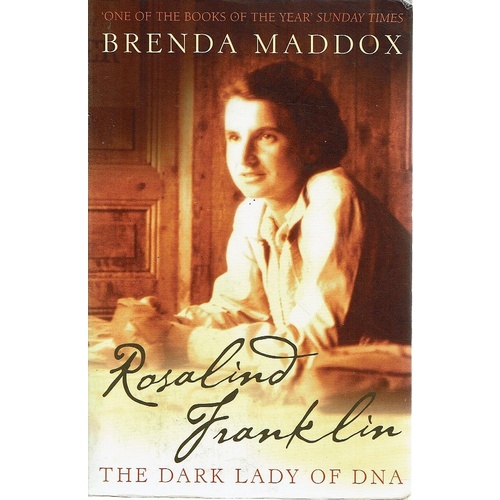

Watson and Crick proposed that DNA forms a right-handed helix composed of two anti-parallel DNA strands, which are kept together by specific hydrogen bonds between adenines and thymines and between guanines and cytosines. The best known of the three papers is the one by James Watson and Francis Crick, who both then worked at the Cavendish Laboratory of Cambridge University. In the 25 April 1953 issue of Nature, three consecutive short papers ushered in a new era in biology by unveiling an ingenious model of the DNA structure, together with the X-ray diffraction data crucial for its formulation.

She died in 1958, age 37, at the peak of her career.The story of Rosalind Franklin never ceases to fascinate, and the publication of her biography as told by Brenda Maddox is indeed pertinent: in a few weeks' time we will celebrate 50 years of the most illuminating discovery in life sciences, namely the revelation of the structure of DNA. In addition, " Pauling condemned the portrayals of himself, his wife, his son, Francis Crick, Sir Lawrence Bragg and Rosalind Franklin." Franklin could not defend herself. Francis Crick and Maurice Wilkins objected strongly. In reviewing the draft of Watson's manuscript, Harvard had required the written consent of all of the prominent figures mentioned. As Maddox reminds us, Harvard University Press refused to publish Watson's book. What readers of The Double Helix might not know is that Watson was very much aware of the implications of his portrayal of Franklin. Maddox dismisses as "pious" and "faint praise" Watson's later apologetic epilogue, where he limply describes Franklin as a "fine scientist," and how "as a young man, he had not appreciated the difficulties of a woman making her way in a man's world of science." Maddox, in the newest contribution to this saga, describes Watson's characterization of Franklin as, "the termagant who hoarded data she could not comprehend, treated men like naughty little boys and wore dresses even dowdier than those of the average English-woman," and that is the unavoidable image of Franklin readers of The Double Helix remember.

The latter three received a Nobel Prize for their discovery in 1962. Franklin was, of course, one of the four principal actors in that discovery, along with Watson, Francis Crick, and Maurice Wilkins. The central issue in this life of Franklin and in how history remembers her role in the discovery of DNA is Watson's memorable but flagrantly disrespectful and dishonest characterization of her. Was Nobel laureate James D Watson fully aware that his The Double Helix, the now classic account of the discovery of DNA, would one day explode in his face? In the riveting epilogue to her recent biography of Rosalind Franklin, The Dark Lady of DNA, Brenda Maddox revisits the genesis of Watson's famous book.

BRENDA MADDOX'S Rosalind Frankin: The Dark Lady of DNA Harper Collins Canada.


 0 kommentar(er)
0 kommentar(er)
